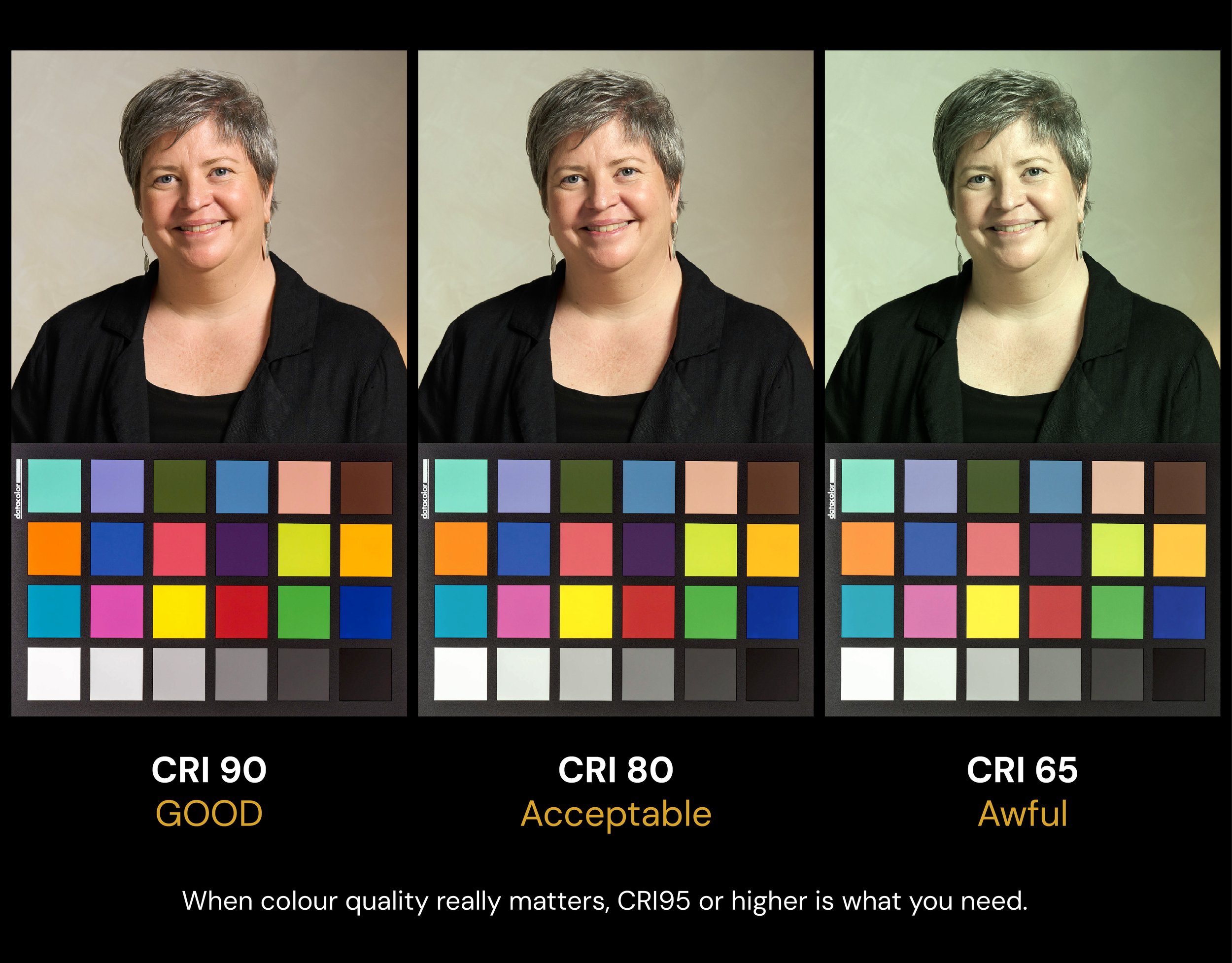BATHROOM LIGHTING - PART FOUR
The importance of understanding Colour Rendering and Colour Temperature In Bathroom Lighting
Following on from my previous blogs on bathroom lighting (PART ONE, PART TWO and PART THREE, if you’ve worked out what you want to see and how you want to see it in your bathroom it’s now time to select your light fittings.
There are a couple of key ingredients you need to know to get the perfect light for your bathroom — colour rendering and colour temperature. There are many factors to consider when choosing light fittings, check out our blog on Evaluating Light Fittings at home for more details, but in the bathroom, these two are the MOST important:
Colour Rendering
The first and most important ingredient is the *quality of light* produced by the light fittings you choose. In a bathroom it is vital that your lighting accurately portrays skin tones — if your light isn’t good quality, your reflection will look ‘off colour’ in the mirror — which is not a great way to start to the day!
The way quality of light is measured is called the ‘Colour Rendering Index’, or CRI for short. It is the measurement of the colour quality in light and it is different for every light fitting.
Knowing what to look for is a crucial first step. Quality light fittings always have a CRI rating — so what exactly is CRI?
The CRI describes how accurately a light source reproduces colours on a scale from 1 to 100. The lower the number, the poorer the reproduction of colour. The CRI number cited on a light is the average of the results for that fitting.
As a general rule, any light source with a CRI rating of Ra80 or above will faithfully render colours well enough that we can barely perceive any deficiencies. High quality light fittings will have a CRI rating of Ra90 or above — often over 95 — and given the wide variation in skin tones and colours of interiors, the higher the CRI the better your bathroom lighting will be.
Sunlight has the best CRI rating of all — it’s got the complete spectrum of colour and if you can get daylight into your bathroom, you’re definitely on a winner. But, as we all know, sunlight is not always available, so we do our best to bring its qualities to our life with carefully selected light fittings.
Quality lighting manufacturers and suppliers will clearly mark the CRI Rating on their products or specification pages as:
· CRI80+ (or Ra80+) — this is a reasonably good rating,
· CRI90+ (or Ra90+) — is a very good rating,
· and anything near 100 is an excellent rating.
Another key ingredient is colour temperature. We talk a lot about the difference between warm and cool light at MINT and there’s no “right” answer — what matters is how you want your home to feel. There is however one wrong answer – and that is mixing your colours in a room (or a house for that matter). Consistency is key – choose your colour, and stick with it
Colour Temperature
So, what is *colour temperature* anyway?
Essentially, colour temperature is a gauge expressed on the kelvin scale (K), which indicates the colour appearance of the lamp [bulb] itself, and the light it produces. There is a fair bit of complexity around Colour Temperature in LED light sources, check out our blog on Evaluating Light Fittings at home for more details
Why is it important? Well, it can determine how you want your bathroom to feel.
Cooler light (4000K Neutral White) in a white bathroom can feel surgical to some — but to others it’s just right, it feels clean, bright, light and airy.
At MINT, we believe the best selection is a good quality 3000K Warm White light, it’s *white* with a little hint of warmth — so you get light and bright — but you also get a calm and kind light. Personally, that’s what I prefer when looking in the mirror (particularly first thing), a calm and kind reflection.
For a powder room with a deluxe feel, warm the lighting up even more (2200K–2700K Warm White) which will make the room feel moody, luxurious and relaxing
For more information on colour temperature pop on over to my blog The difference between Warm and Cool Light
MINT lighting experts LOVE this kind of detail and have years of experience with choosing great light fittings. We are here to help – so if you’d like a professional to take care of your lighting design, get in touch!


